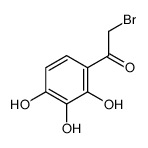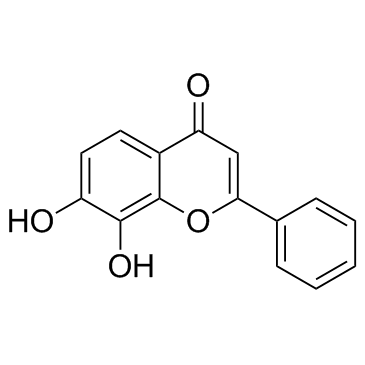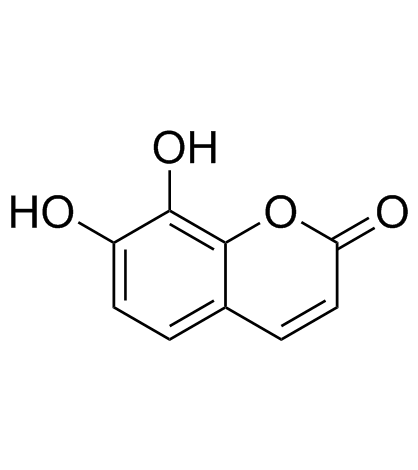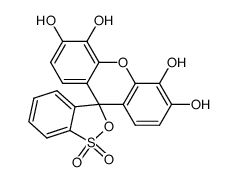87-66-1
| Name | Pyrogallol |
|---|---|
| Synonyms |
1,2,3-trishydroxybenzene
trihydroxybenzene 1,2,3-Trihydroxybenzene EINECS 201-762-9 Pyrogallol PYROGALL MFCD00008358 benzene-1,2,3-triol Fourrine 85 Benzol-1,2,3-triol pyrogallic 1,2,3-Benzenetriol gallol Piral 1,2,3-trihydroxy-benzene Fourrine PG Phloroglucinol Impurity 1 |
| Description | Pyrogallol is a polyphenol compound, which has anti-fungal and anti-psoriatic properties. Pyrogallol is a reductant that is able to generate free radicals, in particular superoxide anions. |
|---|---|
| Related Catalog | |
| Target |
Human Endogenous Metabolite |
| In Vitro | Pyrogallol (PG) is a reductant that is able to generate free radicals, in particular superoxide anions (O2•-), so has frequently been used as a photographic developing agent and in the hair dying industry. Pyrogallol inhibits Calu-6 and A549 lung cancer cell growth via apoptosis and depletion of glutathione (GSH). Pyrogallol (PG) induces apoptosis in lung cancer cells via the overproduction of O2•- and affects mitogen activated protein kinases (MAPKs) in these cells[1]. The effect of Pyrogallol on human pulmonary fibroblast (HPF) cell viability and necrotic cell death is examined. For these experiments, 0, 50 or 100 µM Pyrogallol is used to differentiate the levels of cell viability inhibition or death with or without a given MAPK inhibitor. Treatment with 50 and 100 µM Pyrogallol decreases HPF viability by ~40 and 65% at 24 h, respectively. Treatment with an MEK inhibitor slightly enhances the inhibition of cell viability in 50 µM Pyrogallol-treated HPF cells, whereas treatment with a p38 inhibitor mildly attenuates the inhibition of viability. In 100 µM Pyrogallol-treated HPF cells, all the MAPK inhibitors increase the inhibition of viability to a certain extent, with treatment with the p38 inhibitor alone augmenting HPF control cell viability. Necrotic cell death is determined by measuring lactate dehydrogenase (LDH) release from cells. While treatment with 50 µM Pyrogallol does not affect LDH release from HPF cells, 100 µM Pyrogallol significantly increases LDH release[1]. |
| Cell Assay | Briefly, 5×103 HPF cells per well in 96-well microtiter plates are exposed to 0, 50 or 100 µM Pyrogallol with or without each MAPK inhibitor at 37°C for 24 h. Changes in cell viability induced by Pyrogallol and/or a given MAPK inhibitor are determined by measuring the MTT; dye absorbance[1]. |
| References |
| Density | 1.453 |
|---|---|
| Boiling Point | 309 ºC |
| Melting Point | 131-135 ºC |
| Molecular Formula | C6H6O3 |
| Molecular Weight | 126.110 |
| Flash Point | 164.3±16.9 °C |
| Exact Mass | 126.031693 |
| PSA | 60.69000 |
| LogP | 0.29 |
| Vapour density | 4.4 (vs air) |
| Vapour Pressure | 0.0±0.6 mmHg at 25°C |
| Index of Refraction | 1.677 |
| Storage condition | Desiccate at RT |
| Stability | Stability Stable, but decolourises in light. Combustible. Incompatible with strong oxidising agents, alkalies, metal oxides, ammonia, antipyrine, phenol, iodine, lime water, menthol, potassium permanganate, strong bases. |
| Water Solubility | 400 g/L (25 ºC) |
CHEMICAL IDENTIFICATION
HEALTH HAZARD DATAACUTE TOXICITY DATA
MUTATION DATA
|
| Symbol |


GHS07, GHS08 |
|---|---|
| Signal Word | Warning |
| Hazard Statements | H315-H319-H341-H412 |
| Precautionary Statements | P280-P305 + P351 + P338 |
| Personal Protective Equipment | Faceshields;full-face respirator (US);Gloves;Goggles;multi-purpose combination respirator cartridge (US);type ABEK (EN14387) respirator filter |
| Hazard Codes | Xn:Harmful |
| Risk Phrases | R20/21/22;R52/53;R68 |
| Safety Phrases | S22-S24/25-S61-S36/37 |
| RIDADR | UN 2811 6.1/PG 3 |
| WGK Germany | 3 |
| RTECS | UX2800000 |
| Packaging Group | III |
| Hazard Class | 6.1 |
| HS Code | 2907299090 |
| Precursor 9 | |
|---|---|
| DownStream 9 | |
| HS Code | 2907299090 |
|---|---|
| Summary | 2907299090 polyphenols; phenol-alcohols。supervision conditions:AB(certificate of inspection for goods inward,certificate of inspection for goods outward)。VAT:17.0%。tax rebate rate:9.0%。MFN tariff:5.5%。general tariff:30.0% |


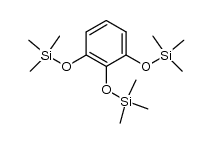
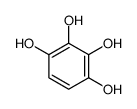
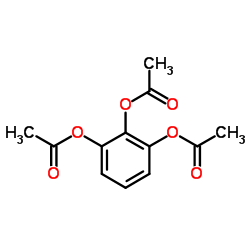
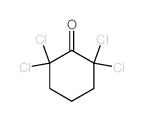


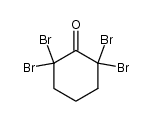
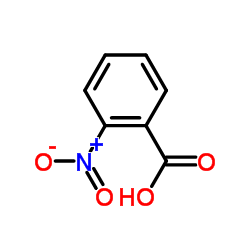
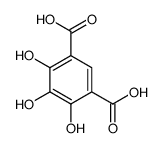
![4-(oxiran-2-ylmethoxy)spiro[1,3-benzodioxole-2,1'-cyclohexane] structure](https://image.chemsrc.com/caspic/294/106835-64-7.png)
